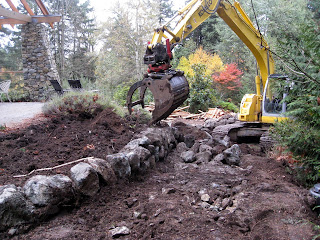After working its way from Newfoundland and across Canada to places in between, the 'Edge of the Forest' exhibition has arrived on the west coast.
Actually, the 54 works in 2 shipping crates arrived on the island a month or so ago and I have kept them in storage until today when they were loaded into the car to be taken to Coast Collective's new gallery in Colwood.
Barb McCaffrey - Hanging Team Member
The first task was to measure all of the hanging walls and do a bit of math to work out how to fit in all of the works without gaps, squishing or have work left over.
We laid white sheets on the floor then laid each work down as we unpacked the boxes.
Laura Feeleus - Hanging Team Member
Next, we moved works around to find the best arrangement for each wall.
We tried lots of different combinations until there was a consensus.
I think I am checking the lighting.
The view from one entrance door with labels up but lighting still to be adjusted.
The view from the internal entrance.
Anni Hunt's work beside the text panel.
This Surface Design Association exhibition by Canadian members is to open in the Coast Collective's new gallery in Colwood, just out of Victoria, on Vancouver Island.
It opens on March 23rd and there will be 2 receptions during the duration of the exhibition.
The first reception, on March 26th from 2 pm to 4 pm, celebrates the arrival and display of the current work by Canadian textile and fibre artists.
The second reception is private because it is part of the 3-day 'Gathering at the Edge' event where over 40 BC members of the Surface Design Association will come together to share and build their community. 18 of the 26 BC artists whose work is in the exhibition will be attending this reception.
I do hope if you live in this part of the world or are visiting at this time you can come and see the exhibition, attend one of the receptions and talk to the artists about their work.
For more info on the exhibition and details about every work visit the website Edge of the Forest


















































